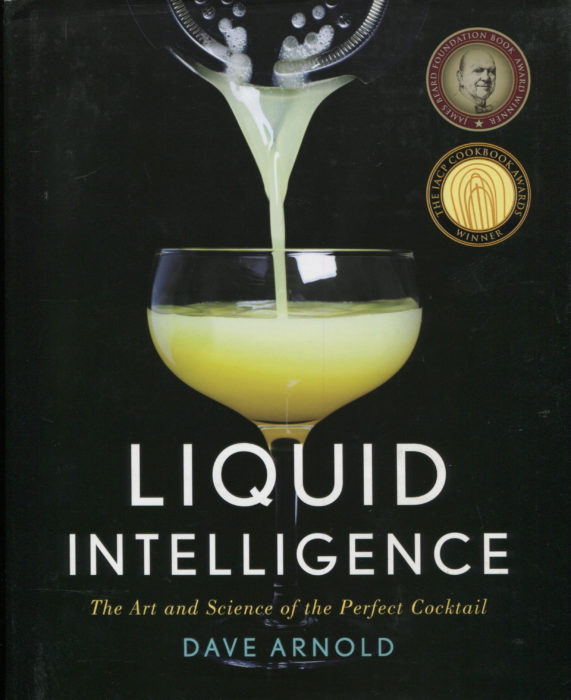
I am still traveling and I’m taking this opportunity the let you see my favorite cookbooks of the past year. If you missed these the first time, do give them your consideration.
Dave Arnold has created one of the premier cocktails bars in the world. Booker & Dax in the East Village is a mecca for anyone who loves a pour and a sip.
Dave is, then, a world-class mixologist. But, he is more than that. He’s a food scientist who specialty is how to combine multiple ingredients into beverages that astonish. Ways using the standard things already in your kitchen. Ways using things that would remind you of high school chemistry. Ways using things that are, truly, rocket science.
The book’s subtitle of this book is important: The Art and Science of the Perfect Cocktail. Perfection is, of course, expected. The combination of “art” and “science” is the substance of this book. A great cocktail needs both, the science for the right temperature, that correct feel on the tongue, the exact match of sweetness, acidity, and alcohol. The art gives you the flavor, the sublime flavor of that perfect drink.
The book has three parts:
- Preliminaries devoted to measuring and ingredient
- Traditional Cocktails covering ice and shaken, stirred and built drinks
- New Techniques discussing cooling technique, muddling, hot pokers and infusions
There’s vast ground covered in this book. It’s not one you just sit and read. This is a cocktail companion that will be with you for your entire beverage life. Dave’s knowledge spills forth paragraph after paragraph. And there are suggestions that you really should treat as rules. Since these drinks are science based, Dave notes that you always measure, not just pour. Pouring can look spiffy. Measuring tastes better, far better.
Most of us are not going to invest in liquid nitrogen or a centrifuge or a vacuum machine. So the key section here deals with traditional cocktails. What is tradition? It’s just ice, booze, and mixers combined with basic equipment: your cocktail shaker and maybe a muddler.
I just listed ice as the first ingredient. There are pages and pages devoted to ice. Just ice. How to make crystal clear ice. That’s in large blocks. How to cut those blocks. How to pull one from the freezer and know just the right moment to chop away. With the right equipment.
Why is ice so important? The look of pure, clear ice is imposing. Cloudy, bubbly ice compromises the visual appeal. And both the quality and the size of the ice are essential. Any impurities will affect the flavor.
And the ice size, whether in cubes or blocks or shaved pieces, has dramatic effect. Ice melts as it cools. That water becomes part of the drink, diluting it, changing the intensity of the flavor and the feel on the tongue. Ice matters and Dave tells you how to ice your cocktail. Here’s another rule: never shake a cocktail with shaved ice. Too much dilution.
Dave goes into the science details of shaking versus stirring. Stirring is a hard technique and takes time, if done well. Impatient? Using a blender instead? Be quick, Dave advises, because that whirling blade does something you do not want: adding heat.
There are cocktail recipes here, of course. The same cocktail is made multiple ways to compare the results. There is an eggless whiskey sour and one with egg white. Do you want foam or not?
Beyond appearance, there is the balance of alcohol and other ingredients that affects the way your cocktails are experienced by tongue and mouth. The section Cocktail Calculus looks at the chemical inner workings of a portfolio of beverages. There are algebraic equations for how shaking and stirring differently change the dilution of a cocktail. Temperature affects your sensing of sweetness so a colder drink needs more sugar elements to achieve the same “sweetness” perception.
Along with sweetness, cocktails have an acid component, also impacted by temperature and technique. And, there is the alcohol level. Dave discusses 45 basic cocktails and analyzes the balance of sweetness, acidity, and alcohol level. There’s a two-page infographic that shows the results, a picture impossible to describe in even a thousand words. Find the book, look at pages 128-129. You’ll be impressed. And, then, I suspect you’ll be toting Liquid Intelligence home. You may even be on your way to buying a centrifuge. Or having a shelf for your liquid nitrogen. Liquid Intelligence is that kind of inspiring book.
